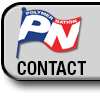SP-15 Epoxy Patching Paste
SP-15

Product Overview
Uses
Preparation
The data below represents the most pertinent information needed by a professional installer to understand and efficiently install this material. The data was gathered at temperatures of 72-75 F and 30-50% RH. A wide array of independent and company test data has been compiled on this product but is too large to place on this Technical Data Sheet. Please direct inquiries for detailed test reports on this product to lab@polymernation.com.
SP-15
| Description | Results | Notes |
| Number of mixes per kit | 1 | A 1 mix kit consists of 32 FL. OZ. A, 16 FL. OZ. B and 1-3 LB. bag of C. |
| Number of Components | 3 | |
| Mix Ratio by Volume | 2:1 see Mixing & Installation | It is always preferred to mix the entire kit, whenever possible, to avoid off-ratio mixtures |
| Ideal Application Temperatures | 60F-90F | Verify that substrate temperature is above 5 degrees of dewpoint during application and cure of material to avoid a potential amine blush |
| Mixed Viscosity in cP@25C/77F | 3500+ A & B | Warmer temperatures will reduce viscosity and lower temperatures will increase viscosity |
| Gel Time | 20 min. | Warmer temperatures will decrease gel time and lower temperatures will increase gel time |
| Dry to Touch | 2.5 Hours | Warmer temperatures will reduce time and colder temperatures will increase time |
| Through Dry | 4 Hours | Warmer temperatures will reduce time and colder temperatures will increase time |
| Dry to Walk | 4.5 Hours | Warmer temperatures will reduce time and colder temperatures will increase time |
| Dry to Lightly Use | 6 Hours | Warmer temperatures will reduce time and colder temperatures will increase time |
| Full Cure | 7 Days | Warmer temperatures will reduce time and colder temperatures will increase time |
| Shore Hardness at 24 hours | D65 | Warmer temperatures will increase hardness |
| Shore Hardness at 7 days | D78 | Warmer temperatures will shorten time to reach full hardness |
| Gloss @ 60 Degree Angle | 30-40 | Applying material close to dew point will decrease gloss and may result in an amine blush |
| VOC’s of Mixed Material | <50g/L | EPA Method 24 |
| Color Scale per ASTM D1500 | .5-1.0 | Clear to slightly amber before filler is introduced |
| Solids by Volume Mixed | 100% | |
| Storage | 60F-90F | Store material between 60-90 degrees F in a protected dry location. |
| Odor | Subtle | |
| Coverage Per Mix | Each mix will cover approximately 3.2 sq. ft. at 1/4″ or 150 LF of 1/4″ X 1/4″ joint. | |
| Disposal | Dispose of material, containers, solvents, etc.per Federal, State and local guideline, rules and laws | |
| Available Colors | This material is available in clear and once mixed with the 1170 will have a similar color to wet concrete | |
| Mixing & Installation | A mixture consists of 32 FL. OZ. A, 16 FL. OZ. B and 3 LB. of C (PN 1170). Combine part A and B into a single container, large enough to accept the entire kit (1 mix equals .5 gallons when Part C is added). Premix liquids at 350 RPM for 1 minute using an appropriate mixing blade. Place mixed material on a mortar board and apply mixed material within 20 minutes using patching techniques. Recoat within 5 hours. Clean tools with a solvent similar to Xylene or Acetone. | |
| Polymer Nation believes the information contained herein to be true and accurate. Information contained herein is for evaluation purposes only. |
||



